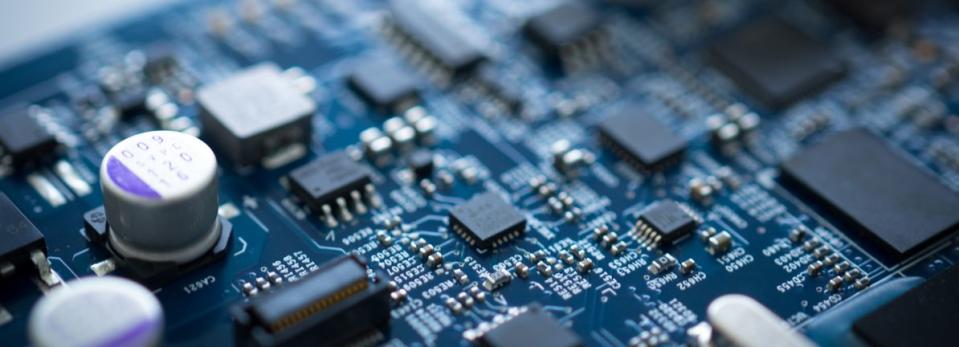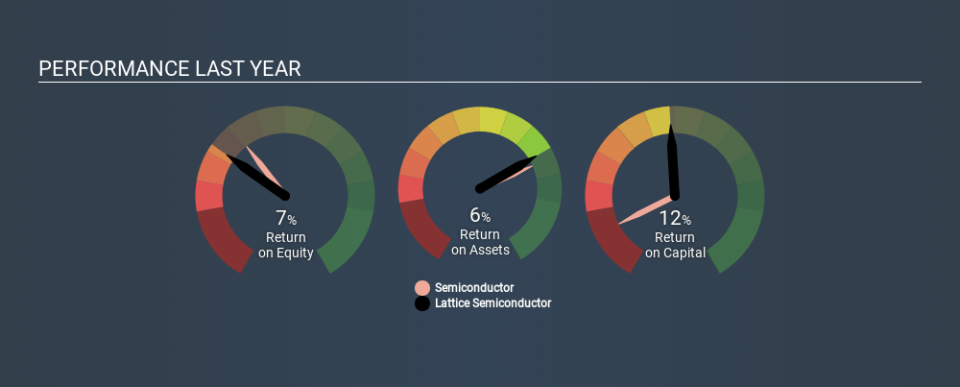Is Lattice Semiconductor Corporation's (NASDAQ:LSCC) Capital Allocation Ability Worth Your Time?

Today we are going to look at Lattice Semiconductor Corporation (NASDAQ:LSCC) to see whether it might be an attractive investment prospect. In particular, we'll consider its Return On Capital Employed (ROCE), as that can give us insight into how profitably the company is able to employ capital in its business.
First of all, we'll work out how to calculate ROCE. Next, we'll compare it to others in its industry. Then we'll determine how its current liabilities are affecting its ROCE.
What is Return On Capital Employed (ROCE)?
ROCE is a metric for evaluating how much pre-tax income (in percentage terms) a company earns on the capital invested in its business. Generally speaking a higher ROCE is better. In brief, it is a useful tool, but it is not without drawbacks. Renowned investment researcher Michael Mauboussin has suggested that a high ROCE can indicate that 'one dollar invested in the company generates value of more than one dollar'.
How Do You Calculate Return On Capital Employed?
Analysts use this formula to calculate return on capital employed:
Return on Capital Employed = Earnings Before Interest and Tax (EBIT) ÷ (Total Assets - Current Liabilities)
Or for Lattice Semiconductor:
0.12 = US$59m ÷ (US$593m - US$81m) (Based on the trailing twelve months to September 2019.)
Therefore, Lattice Semiconductor has an ROCE of 12%.
View our latest analysis for Lattice Semiconductor
Is Lattice Semiconductor's ROCE Good?
ROCE is commonly used for comparing the performance of similar businesses. It appears that Lattice Semiconductor's ROCE is fairly close to the Semiconductor industry average of 10%. Regardless of where Lattice Semiconductor sits next to its industry, its ROCE in absolute terms appears satisfactory, and this company could be worth a closer look.
Lattice Semiconductor delivered an ROCE of 12%, which is better than 3 years ago, as was making losses back then. This makes us wonder if the company is improving. You can see in the image below how Lattice Semiconductor's ROCE compares to its industry. Click to see more on past growth.
It is important to remember that ROCE shows past performance, and is not necessarily predictive. ROCE can be misleading for companies in cyclical industries, with returns looking impressive during the boom times, but very weak during the busts. ROCE is only a point-in-time measure. Future performance is what matters, and you can see analyst predictions in our free report on analyst forecasts for the company.
Do Lattice Semiconductor's Current Liabilities Skew Its ROCE?
Current liabilities include invoices, such as supplier payments, short-term debt, or a tax bill, that need to be paid within 12 months. Due to the way the ROCE equation works, having large bills due in the near term can make it look as though a company has less capital employed, and thus a higher ROCE than usual. To counteract this, we check if a company has high current liabilities, relative to its total assets.
Lattice Semiconductor has total assets of US$593m and current liabilities of US$81m. Therefore its current liabilities are equivalent to approximately 14% of its total assets. A fairly low level of current liabilities is not influencing the ROCE too much.
Our Take On Lattice Semiconductor's ROCE
Overall, Lattice Semiconductor has a decent ROCE and could be worthy of further research. There might be better investments than Lattice Semiconductor out there, but you will have to work hard to find them . These promising businesses with rapidly growing earnings might be right up your alley.
If you are like me, then you will not want to miss this free list of growing companies that insiders are buying.
If you spot an error that warrants correction, please contact the editor at editorial-team@simplywallst.com. This article by Simply Wall St is general in nature. It does not constitute a recommendation to buy or sell any stock, and does not take account of your objectives, or your financial situation. Simply Wall St has no position in the stocks mentioned.
We aim to bring you long-term focused research analysis driven by fundamental data. Note that our analysis may not factor in the latest price-sensitive company announcements or qualitative material. Thank you for reading.

 Yahoo Finance
Yahoo Finance 
